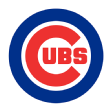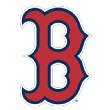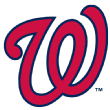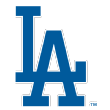In the final piece of our series, here are the Top 10 teams, based on input from evaluators. It starts with an organization that has a chance to complete the foundation of a dynasty.
 1. Chicago Cubs
1. Chicago Cubs
At their best: Because the Cubs have so many young, developing players, they could be even better than in 2016, when they won 103 games. From catcher Willson Contreras to Kyle Schwarber (who is 23 and has just 278 regular-season at-bats) to infielder Javier Baez (who has made tremendous improvement at the plate) to MVP Kris Bryant (who has just two years in the big leagues), there could be a lot of growth on a team that was as well-rounded as any in recent memory.
What could go wrong: The Cubs have incredible position-player and bullpen depth, but a soft underbelly of the club -- as with all contending teams -- can always be found in the rotation depth because few clubs go eight, nine or 10 starters deep. Remember that spring training week in 2014 when the Atlanta Braves lost Kris Medlen and Brandon Beachy within 24 hours, and it changed everything for them? Jon Lester is 33 years old, John Lackey had some shoulder trouble down the stretch last season, and rival evaluators say the one overriding developmental need for the Cubs is young starting pitching.
A key number: According to Baseball Reference’s Pythagorean W-L, the expected win-loss record for the ’16 Cubs was 107-55 -- even better than they actually fared. The expected record for the second-place Cardinals: 88-74. That is an enormous gap.
At their best: The Indians might have the best chance of any team to win their division because of the AL Central context. The Minnesota Twins are deep in the rebuilding process, the White Sox are still in the process of deal-making for Jose Quintana, Todd Frazier and others and haven’t yet found rock bottom, and the Royals and Tigers are trying to better position themselves for 2018 and beyond by managing their payrolls. The Indians, on the other hand, are all-in to win now.
What could go wrong: No. 3 starter Danny Salazar had arm issues a couple times in 2016, and Trevor Bauer is always a wild card, capable of being very good or really struggling. Last year, Bauer had 11 starts in which he allowed four runs or more, including four in September, and nine starts of two runs or fewer.
A key number: The Indians’ pitchers led AL teams in xFIP last season, a fielding-independent metric.
At their best: Even without David Ortiz, the Red Sox have the potential to be an offensive juggernaut, with Dustin Pedroia, Xander Bogaerts and Mookie Betts leading the way. That trio combined for 342 runs, 607 hits, 168 walks, 112 doubles, seven triples and 67 homers last season. That sort of production creates a lot of margin for error for any pitching staff -- and the Red Sox might not need much, given their rotation of Cy Young winner Rick Porcello and the four All-Star starters who follow.
What could go wrong: In building the roster the past two years, the Red Sox dealt some of their pitching depth, most notably prospect Anderson Espinoza, as well as Clay Buchholz. Underneath that star-laden rotation, the Red Sox do not appear to have a lot of starting pitching with the experience needed to cope in the AL East. Boston could go into the year without safety nets in this part of its organization.
A key number: The Red Sox outscored the next-best AL lineup by 101 runs last year. But that was with Ortiz, who was the linchpin of the lineup, a hitter capable of making opposing pitchers and catchers pay for their flaws in dealing with the top three guys in the Red Sox's batting order. There’s no getting around this: Ortiz will be missed, and the Red Sox need somebody to seize on those opportunities left behind. Hanley Ramirez, perhaps? Will the left-handed-hitting Andrew Benintendi take over the leadoff spot, pushing Betts down to the cleanup spot? Or could Benintendi slot into the No. 2 spot to split up the right-handed hitters? We’ll see. Will Sam Travis become a factor in some way?
At their best: The Nationals won more games last season than any NL team other than the Cubs, despite some real problems: Bryce Harper had the worst showing of his career, Washington had closer issues for two-thirds of the year, and Stephen Strasburg made one appearance after Aug. 17. As such, there is room for growth in the 2017 version of the Nationals, particularly in a lineup that will be fronted from day one by Trea Turner and Adam Eaton.
What could go wrong: It’s mid-January, and manager Dusty Baker still doesn’t know for sure who his closer will be. The Nationals will be left to hope Strasburg can avoid yet another elbow issue, and they will have to try to make up for the offense left behind by catcher Wilson Ramos. Plus, they know from 2015 how dangerous the Mets can be.
Some key numbers: Last year, Washington’s leadoff hitters ranked 28th among 30 teams in OBP, and the Nationals’ No. 2 hitters ranked 10th. Now, with Eaton and Turner batting in those top two spots, Washington’s lineup could be near the top of those respective rankings.
At their best: If L.A. gets 110 starts from Clayton Kershaw, Rich Hill, Kenta Maeda and Julio Urias -- in other words, some stability in the rotation, finally -- the Dodgers will have made huge inroads to winning the NL West again, given the depth in the rest of their roster.
What could go wrong: The Dodgers don’t have a single starting pitcher who will go into spring training free of heightened injury concern or an innings limit. They were able to work through that in 2016, largely because Kershaw had the best 149 innings ever thrown by any starting pitcher in one season, but in the more competitive NL West, it could be more difficult for them to repeat that fragile equation.
A key number: 15. That’s the number of starting pitchers deployed by Dave Roberts last season.
At their best: Bit by bit, piece by piece, Seattle GM Jerry Dipoto has upgraded the roster, promoting Edwin Diaz from Double-A to the bullpen last summer and filling the outfield with speedsters and high-end defenders such as Leonys Martin, Jarrod Dyson and Mitch Haniger. Now the Mariners have a good supporting cast around core stars Robinson Cano, Felix Hernandez, Nelson Cruz and Kyle Seager. The Mariners might have their best team since 2001.
What could go wrong: Hernandez has a lot of mileage, and Cruz and Nelson have reached the age at which regression starts to become inevitable. The clock on the Mariners’ window of opportunity is running out, which is part of the reason Dipoto has worked aggressively.
A key number: 223. That's the number of homers hit by Seattle last season, third in the majors.
At their best: With lineup and clubhouse upgrades in Carlos Beltran, Brian McCann and Josh Reddick and with continued development of the likes of Carlos Correa, the Astros could challenge Boston’s standing as the most prolific offensive team in the majors. Houston doesn’t have to have great starting pitching in order to win -- heck, the Astros don’t need to have even good starting pitching, considering the quality of the other parts of the team.
What could go wrong: The rotation has a lot of question marks. Can Dallas Keuchel get back the two runs in ERA that he lost last season? Will Lance McCullers, hurt for a lot of ’16, make more than 14 starts?
Some key numbers: 4-15, 11 games under .500. That’s the Astros’ win-loss record in games against Texas in 2016, a season in which Houston finished 11 games behind the Rangers.
At their best: The addition of Dexter Fowler and the commitment to a more athletic, defense-first lineup should make the Cardinals a more well-rounded team, a major upgrade over a 2016 team that had far too many defensive problems.
What could go wrong: The Cardinals are a sum-of-the-parts team, perhaps lacking that superstar-caliber player who can carry the team with a couple good weeks. Albert Pujols was like that, and so was Matt Holliday at times during his tenure with St. Louis. Perhaps more than any contending team, the Cardinals will have to get a lot of contributions from a lot of parts of their roster.
Some key numbers: The 2015 Cardinals finished 11th in homers among NL teams, and the 2016 Cardinals finished first in the NL in that category. St. Louis will probably finish somewhere in the middle next year while preferring defense in some parts of the order.
At their best: The Mets are confident that they’ll have all or almost all of their starters fully healthy and ready to go at the outset of the 2017 season. If that’s the case -- if Matt Harvey is back to where he was in 2015 and Steven Matz continues to evolve -- then the Mets will have the best and most dynamic rotation in the majors, a group so good it can cover for other offensive and defensive problems.
What could go wrong: If the rotation isn’t healthy, some of the other cracks will be exposed: the uncertainty about David Wright and Lucas Duda, the outfield defense, the lack of lineup depth around Yoenis Cespedes.
A key number: 93. That’s the number of starts Noah Syndergaard, Harvey, Jacob deGrom, Steven Matz and Zack Wheeler combined for in 2016.
 10. Texas Rangers
10. Texas Rangers
At their best: Texas rolled over the rest of the AL West last season, winning the division by nine games, and most of their best guys are back to defend the title, including Cole Hamels, Adrian Beltre and Rougned Odor. The Rangers will have Jonathan Lucroy for the full complement of the season. The Astros and the Mariners have improved their rosters more than Texas has this winter, as the Rangers work around budget issues, but Seattle and Houston had a long way to go as well.
What could go wrong: The starting pitching, undoubtedly. Hamels and Yu Darvish front the rotation, but No. 3 starter Martin Perez is coming off a trying season in which he posted a 4.39 ERA. Former Padres Andrew Cashner and Tyson Ross fill out the back end of the rotation after both had disastrous 2016 seasons for the lowly Padres: Ross started Opening Day and did not pitch again, and Cashner had a 5.25 ERA in 28 games. San Diego was one of the worst teams in the majors, and the Padres traded Cashner and released Ross because of injury concerns.
Some key numbers: 27-11. That was the Rangers’ difference-making record in head-to-head games against the Astros (15-4) and Mariners (12-7).
Honorable mention
Toronto Blue Jays: They still have work to do, but the Jays have strong starting pitching. They led the majors in rotation innings last season.
San Francisco Giants: The Giants plugged their biggest offseason hole by adding closer Mark Melancon, but there is not a lot of margin for error or injuries among the positions players.
Pittsburgh Pirates: Bounce-back seasons from Andrew McCutchen and Gerrit Cole would completely alter the horizon for this team.
New York Yankees: If they get 80 to 90 starts from Masahiro Tanaka, Michael Pineda and CC Sabathia, they could be in contention for a playoff spot as Gary Sanchez and the other pinstriped youngsters develop.
Baltimore Orioles: That this team made the playoffs last year despite so many questions made no sense, and this group of players’ collective history of overcoming problems is why they’re on this list.

 2.
2.  3.
3.  4.
4.  5.
5.  6.
6.  7.
7.  8.
8.  9.
9.